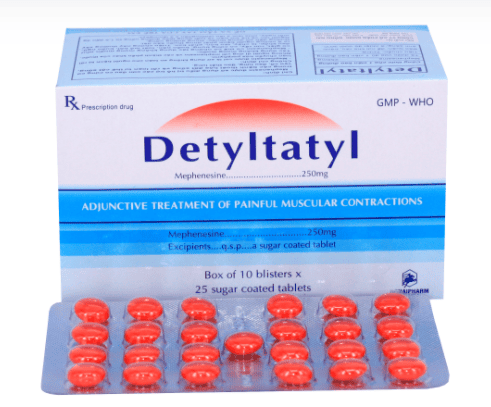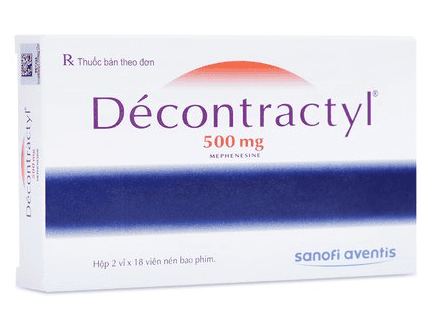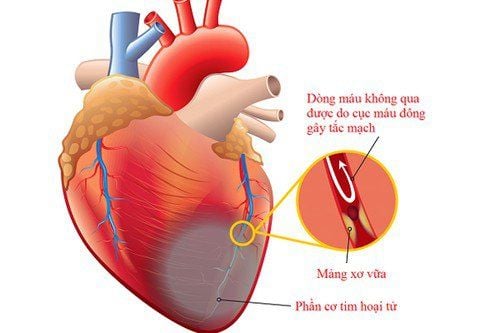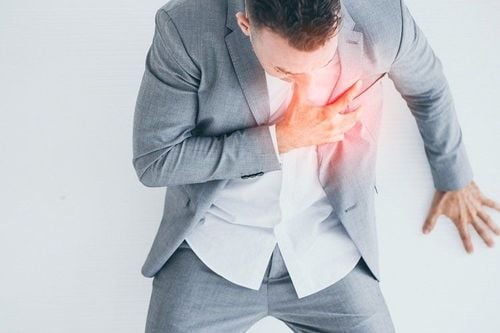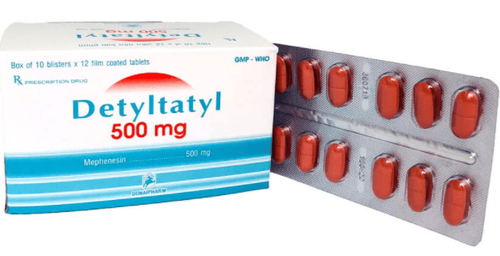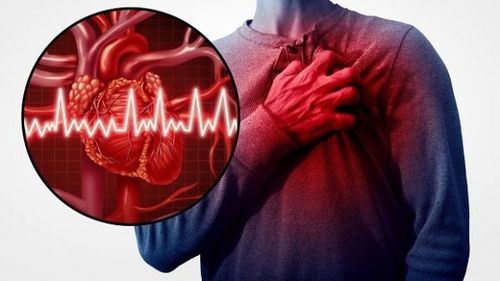This is an automatically translated article.
Children with torticollis is a common defect, caused by congenital fibrosis of the sternocleidomastoid muscle, which causes children to tilt their head to one side and face to the opposite side. To treat this condition, parents need to take the child to the hospital to be rehabilitated for the child with congenital torticollis.1. What is sternocleidomastoid fibrosis?
Fibromyalgia is a condition in which part or all of the muscle cells become fibrous, affecting motor function and aesthetics. Fibromyalgia often lasts for many years, has a diffuse nature and as a result, fibroblasts replace muscle cells, losing elasticity, causing contraction and loss of motor function.Fibromy of the sternocleidomastoid muscle is a condition in which the sternocleidomastoid muscle is partially fibrotic due to the fetal position in the uterus (breast-abdominal position, the placenta wrapped around the neck, ..) or an accident during childbirth leading to to limit the range of motion of the cervical spine in children.
2. Children with torticollis due to fibrosis of sternocleidomastoid muscle
Early signs:Clearly manifest in the baby right after birth or in the first 3 months of age Having a tumor in the sternocleidomastoid muscle with the following symptoms: Tumor detected right after birth, feeling that the tumor is growing rapidly in The first month, palpation of the tumor from slightly firm to very firm, slightly moved out of position according to the sternocleidomastoid muscle. The area where the tumor appears is not hot, red, or painful. Limited range of neck mobility:
Children in the first few months do not move much, so they are often detected later. After the appearance of this tumor about 2-3 months, the baby's head is tilted to the side with the fibrous mass, limited to tilting to the healthy side and turning to both sides.
Late signs:
After 3 months of age If parents do not detect early or do not receive proper treatment: There is mass in the sternocleidomastoid muscle but the density is much stronger Neck torticollis The baby's head is tilted to the side with the tumor limited mobility of the cervical spine (limited tilting the head to the healthy side and turning the head to the sides) Cervical scoliosis, the cervical vertebrae of the child is deformed The child has crossed eyes Atrophy of the ipsilateral half of the face has fibrous mass. Indications for tests:
Ultrasound: Occurrence of tumors in the early stages: There is fluid (hemorrhage). Later stage: fibrous tissue Tumor puncture: Early stage: red blood cells are present Later stage: fibroblasts No polymorphonuclear leukocytes, no malignant cells. X-ray: The image shows that the child has scoliosis when detected late. Therefore, it is necessary to detect and treat early newborn cases of sternocleidomastoid muscle injury right after birth to prevent fibrosis of the sternocleidomastoid muscle. After a course of treatment for children at the hospital, children with sternal fibrosis will need more time to be given the same home exercises by their parents to fully recover.
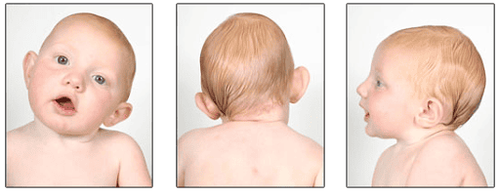
Trẻ bị vẹo cổ bẩm sinh là một dị tật thường gặp
3. Rehabilitation for children with congenital torticollis
It is necessary to intervene immediately after birth or as soon as a tumor in the sternocleidomastoid muscle is detected.Objectives:
To soften the fibrous mass Maintain mobility of cervical vertebrae Prevent early risk of secondary deformities in the cervical spine and craniofacial. Performer
Rehabilitation specialist Physiotherapy technician Before proceeding
Review medical records Thoroughly explain the steps of the procedure to the patient's family. Place the child in a suitable position convenient for performing exercises for each fibromuscular group. For example: sternocleidomastoid fibrosis - the child lies on the side without the fibrous mass to reveal the fibrous mass, the child's head is lower than the shoulder,... General examination of the child's health status. Identify fibromyalgia, evaluate motor function. Steps to be taken:
Step 1: Stretch sternoclavicular fibromuscular muscle
Position: Place the patient on the family's lap, the child's shoulder should touch the edge of the thigh, the technician's hand supports the child's head, and the neck is stretched. and tilted to the healthy side, facing the side with the fibrous mass.
Technician: Using one hand to fix the shoulder joint, hip (from behind), proceed to gently pull the shoulder joint towards the hip.
The other hand (in front of the face): Use the thumb to press the corner of the child's jaw, the other fingers are placed on the mastoid, the lower part of the hand gently rests on the child's head and pulls down slowly and gently.
Hold for about 30 seconds then slowly release and do it again.
Time of exercise: Each time from 5 to 10 minutes, each day from 6 to 8 times.
Note: Perform massage, day combined with stretching, alternately performed during the treatment.
Step 2: Massaging the opposing muscle group with fibromyalgia
Position: Place the patient on the family's lap, the child's shoulder should touch the edge of the thigh, the technician's hand supports the child's head, the neck to stretch and tilt to the side healed, face to the side of the fibrous mass.
The technician uses one hand to keep the shoulder and hip joints in place.
With the other hand, use the thumb or index finger and middle finger to press and rub the fibrous mass in a clockwise direction.
Time to perform from 5 - 10 minutes, every day 6-8 times.
Note: Do not rub on the skin to avoid swelling, redness, causing pain for the child
Step 3: Exercise passive joint movement, or have help to increase joint range of motion, improve fibromuscular function
+ Only performed when the fibrous mass has no heat, redness, or pain.
+ Stretch gently, slowly, without sudden maximum stretching.
+ Do not perform the technique when the child cries or opposes.
Time to conduct from 10 - 30 minutes depending on the age of the child.

Cha mẹ cần đưa trẻ bị vẹo cổ bẩm sinh khám định kỳ theo lịch của bác sĩ phục hồi chức năng
4. When should surgery be indicated for a child with scoliosis due to sternocleidomastoid fibrosis?
Indications for surgery for children when:Children over 2 years old, have severe torticollis, have been treated with other rehabilitation methods but there are no results. The sternocleidomastoid muscle is shortened and firm. The child cannot turn the neck to the side with the fibromyalgia.
5. Rehabilitation note for children with congenital torticollis
Parents need to give their children more exercises to stretch the sternocleidomastoid posture at home by:Parents place the child on his side by using a long pillow on the back (over the shoulder, hip) of the child to Make sure the baby is lying on his or her side completely (avoid lying on their back, head tilted). When placing a baby on his or her side without a fibrous mass, do not place a pillow under the head. When the child lies on the side with the fibrous mass, the triangle pillow should be placed under the head. Change the lying position to each side. Should be done after each meal or change position every 2 hours). Parents need to take their children to regular checkups according to the appointment of a rehabilitation doctor to be monitored and evaluated for musculoskeletal function until the child can perform the full range of motion and the fibrous mass disappears. .
In the following case, the child is treated at home but does not make progress, parents need to take the child for treatment at the hospital.
At the Rehabilitation Department of Vinmec Times City International General Hospital, there is a function of physiotherapy and rehabilitation for all inpatients and outpatients for patients in Hanoi and the region. In the North (both Vietnamese and foreigners), in the fields of Internal Medicine, Surgery, Pediatrics ...
Faculty has the strength of strong techniques in Rehabilitation and Rehabilitation. Effective treatment support for cases of some musculoskeletal and spinal diseases, in order to increase the success rate of the treatment, limit the recurrence to the lowest level and speed up the process. short-term treatment.
Vinmec International General Hospital is equipped with a system of modern machinery and equipment, effectively supporting the treatment process with a high success rate, helping musculoskeletal, musculoskeletal, and spinal nerves to recover. rehabilitation and mobility. There are many good, highly skilled doctors with full practice certificates, along with a team of well-trained technicians who are very dedicated in the process of treatment and rehabilitation. Therapy and rehabilitation programs give good results, meeting the needs and desires of customers.
Please dial HOTLINE for more information or register for an appointment HERE. Download MyVinmec app to make appointments faster and to manage your bookings easily.
Reference source: Ministry of Health



